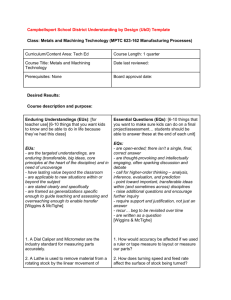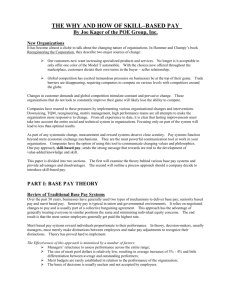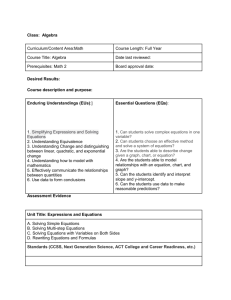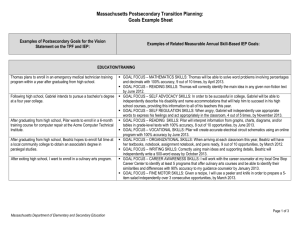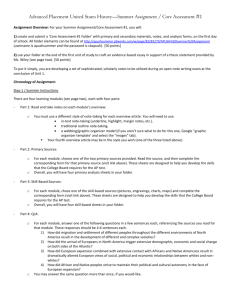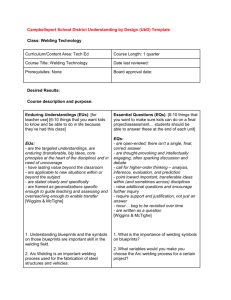Introduction to Skill-Based Pay - ERI Economic Research Institute
advertisement
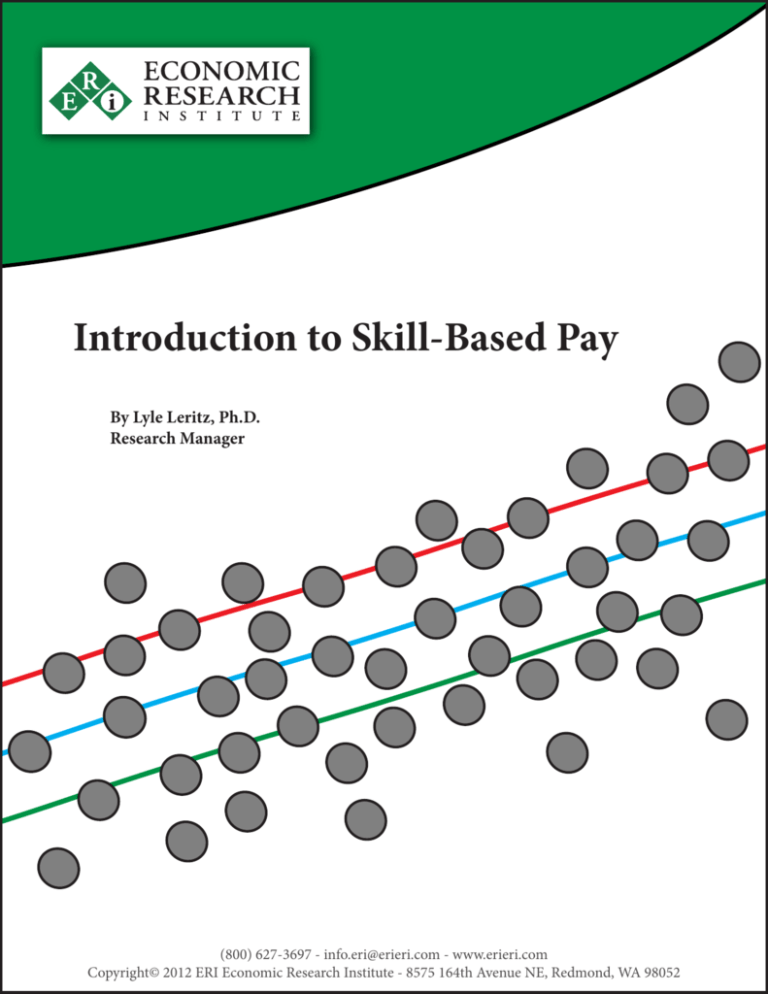
Introduction to Skill-Based Pay By Lyle Leritz, Ph.D. Research Manager (800) 627-3697 - info.eri@erieri.com - www.erieri.com Copyright© 2012 ERI Economic Research Institute - 8575 164th Avenue NE, Redmond, WA 98052 Job-Based Pay vs. Skill-Based Pay The most common approach to compensation is referred to as job-based pay. This is a process by which positions (and the individuals that hold them) are compensated based on job evaluations where an organization has determined the value of each position. Such evaluations consist of formal job analysis, market pricing, and various combinations of both. Note, here the focus is on the position rather than the individual (of course, moving forward, individuals differentiate themselves through performance and receive raises and other incentives accordingly). Most readers should recognize such a compensation system. In contrast, skill-based pay focuses on the knowledge and skills individuals possess, and applies within their work at an organization. The general idea behind skillbased compensation is built around motivating employees to learn multiple skills and, in effect, perform multiple jobs. One of the major advantages of skillbased systems is they increase employee (and organization) flexibility, while simultaneously, decrease the cost of doing business. Because they can assign employees to a diverse set of jobs, an organization staffed with people who have multiple skill sets can more readily handle swift changes in market demands (products, services, etc.), as well as endure employee turnover. Additionally, these organizations can often operate with fewer employees than would be required under traditional jobbased systems. Changes in product or service demands that call for increased resources to a particular department or business unit can be handled with existing employees rather than hiring additional staff. Benefits of Skill-Based Pay Systems In addition to staffing benefits, organizations using skill-based pay systems require fewer job classifications. Instead, broad job categories tied to requisite skills are utilized. The advantage of broad skill-based categories is a reduction in the administrative burden that comes with maintaining equity among numerous job classiCopyright© 2012 ERI Economic Research Institute fications. Consequently, employees are less concerned with moving to higher job classifications and more focused on acquiring new skills and mastering existing skills, which in turn, benefits the organization. Furthermore, organization-wide (or unit-wide) communication is often enhanced because people have a better understanding of a variety of jobs. Finally, organizations utilizing skill-based pay systems often see lower turnover rates and increased recruitment. This can be attributed to an environment where employees are able to develop new skills and grow in a work context which satisfies higher order needs, thus diminishing the need to seek outside opportunities. People are also attracted to organizations that encourage and reward continued skill development. Challenges of Skill-Based Pay Systems With the focus on cooperation, flexibility, skill crosstraining, and self-management, team-based settings are the ideal context for setting up skill-based pay programs. However, there are a number of limitations to keep in mind when it comes to these systems. Potentially, one of the biggest issues is that the cost of wages for an organization can increase without adding value at that particular moment. That is, employees can be acquiring skills for which the organization compensates; however, there is no guarantee those skills will be put to immediate use. Organizations need to pay particular attention to the number of skills for which they pay a premium, otherwise costs for skill-based pay could increase significantly, without a corresponding positive change in productivity. A second, significant drawback with skill-based pay systems is that they often incur considerable costs in terms of time and resources required to train new skills. Whether the organization provides in-house training or pays for outside training, the commitment can be large, both financially and time-wise. Even with relatively inexpensive training, another possible pitfall occurs when employees start to "max out" by learning all of the skills the organization calls for. The risk here is 1 that of reduced morale, in particular, because these are likely to be employees who find reward in an environment that has encouraged them to learn and grow (and compensate them for doing so). On the flip side, there may be employees who lack the ability or motivation to learn additional skills. In large numbers, these employees can negate the value of skill-based pay systems. Regardless of the underlying abilities and motivations of employees, it is crucial that an organization be able to utilize the skills that are learned. An employee is investing time in learning new skills with the expectation that these skills will be used at work. Investing time and energy into learning new skills, only to not use them, can lead to dissatisfaction and morale problems, with significant potential for turnover (to an organization willing to utilize those skills). Despite the best efforts of an organization to maximize skill training for motivated employees, the simple fact remains that some skills become obsolete. In these situations, a decision must be made regarding what to do. Does an organization cut pay or continue to pay for obsolete skills? Are there new skills which could be acquired to make up for obsolete ones? Developing a Plan documenting the current skill levels of employees can be achieved by simply keeping a record of the skills an employee possesses, proficiencies in those areas, and skill development paths. The most difficult aspect to developing skill-based pay plans involves placing a value on skills and attaching them to pay structures. The difficulty arises because most market-based surveys are jobbased rather than skill-based. Because of this difficulty, most skill-based plans are couched in broadband pay structures. Training A critical, but often underestimated, component of skill-based plans is developing training programs (or making available outsourced training) to allow employees to learn new skills. An organization that does not provide resources for training will not find success in skill-based plans. Additionally, it is important to establish criteria for determining when pay increases are awarded for skill acquisition. • Does it require certification or demonstrated proficiency? • Is re-certification necessary? The decision to implement a skill-based pay system (or • If training is in-house, who is the authority to any new compensation system) is one that should not grant certifications? be taken lightly. Even small changes can have broad implications for human resources. The key steps in devel- Finally, the industry, composition of the workforce, and the type of work accomplished can greatly impact the oping a skill-based plan include: success of skill-based systems. • determining the needs of the organization; • assessing current employee skill levels; • setting values for the desired skills; and Setting Generally speaking, skill-based plans are successful in manufacturing settings, especially in terms of productivity. In a manufacturing environment, it is possible When it comes to determining the needs of the orga- to train many employees to complete a wide variety of nization, it is important to consider both the current jobs that allows the manufacturing process to continue, needs as well as future needs, and involves setting paths regardless of who is on staff on a particular day. Adand timetables for skill development. Assessing and ditionally, manufacturing often involves discreet skills • creating protocols for skill training and qualification. Copyright© 2012 ERI Economic Research Institute 2 that an employee can train for. It is easier to attach (and communicate) value to discreet, identifiable skills than it is to more generalized competencies. It is worth noting that the terms skills and competencies are used interchangeably by some; however, they are not equivalent. For the scope of this paper, a competency consists of sets of skills, and is a general term that also includes behaviors and knowledge. Computer programming is another area where skillbased pay may work. There are many programming languages and just as many (if not more) certifications that an employee can obtain. It is easy to see how having one employee programming in multiple languages is more cost-effective than having multiple employees programming in a single language, even if that one person is compensated well above the market for a “Computer Programmer.” On the other hand, there are a number of settings where skill-based plans do not work well or simply do not fit the existing structure. For example, skill-based plans are rarely seen in public education, where compensation is based on seniority. Similarly, highly unionized organizations are often resistant to skill-based plans. Regardless of the pay plan in effect, having a seniority-based system can create difficulty when it comes to recruiting and filling positions. Schools often find it difficult to find teachers for certain subjects, yet they are not free to offer increased wages to fill those vacancies. Offering skill-based rewards (e.g., for subject proficiency/certifi- cation) would likely increase the number of applicants for a given subject. Note, even strictly market-based benchmarking would not alleviate the seniority-based pay issue. Use of Skill-Based Plans Skill-based plans are not always used as standalone or whole systems, rather, they can be incorporated into more traditional compensation plans. For example, base pay might be job-based while incentive plans are skill-based. Alternatively, some companies may choose to use skill-based plans for specific groups of employees and traditional job-based pay for other groups. Nevertheless, numerous studies have demonstrated that skill-based plans are effective compensation systems. A study (Jenkins, Ledford, Gupta, and Doty, 1992) published in the WorldatWork Journal in 1992 found skillbased plans were successful on a number of metrics in as many as three-quarters of the plans. A more recent follow-up study (Shaw, Gupta, Mitra, and Ledford, 2005) indicated that 61 percent of the organizations in the sample continued to use a form of skill-based pay, with an average duration of 12 years for the plans. Although they have been around since the 1960s, skillbased plans did not gain heightened popularity until the early 1990s. We expect continued research to support the effectiveness of such plans as they reach maturity. References: Jenkins, G.D. Jr., G.E. Ledford, Jr., Gupta, N., & Doty. D.H. (1992). Skill‐Based Pay: Practices, Payoffs, Pitfalls, and Prospects. Scottsdale, AZ: American Compensation Association (WorldatWork). Shaw, J. D., Gupta, N., Mitra, A., & Ledford, G.E. Jr. (2005). Success and Survival of Skill-Based Pay Plans. Journal of Management, 31(10), 1‐22. Copyright© 2012 ERI Economic Research Institute 3
